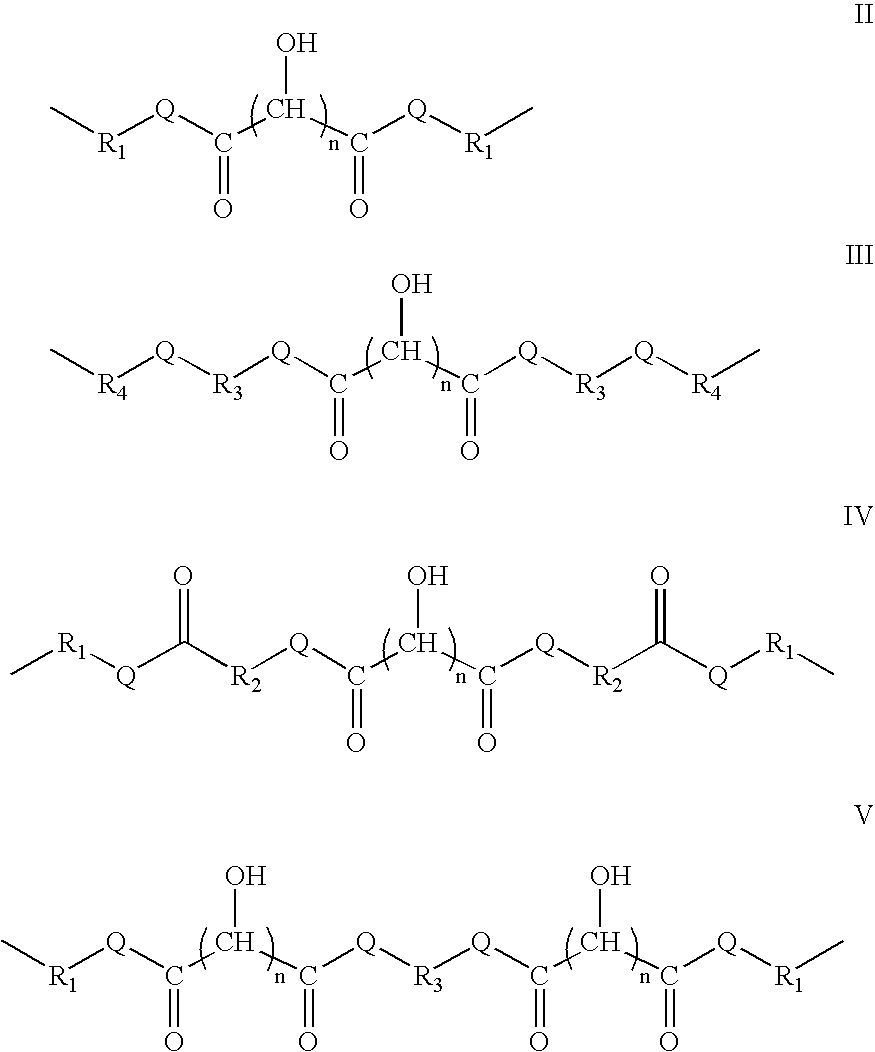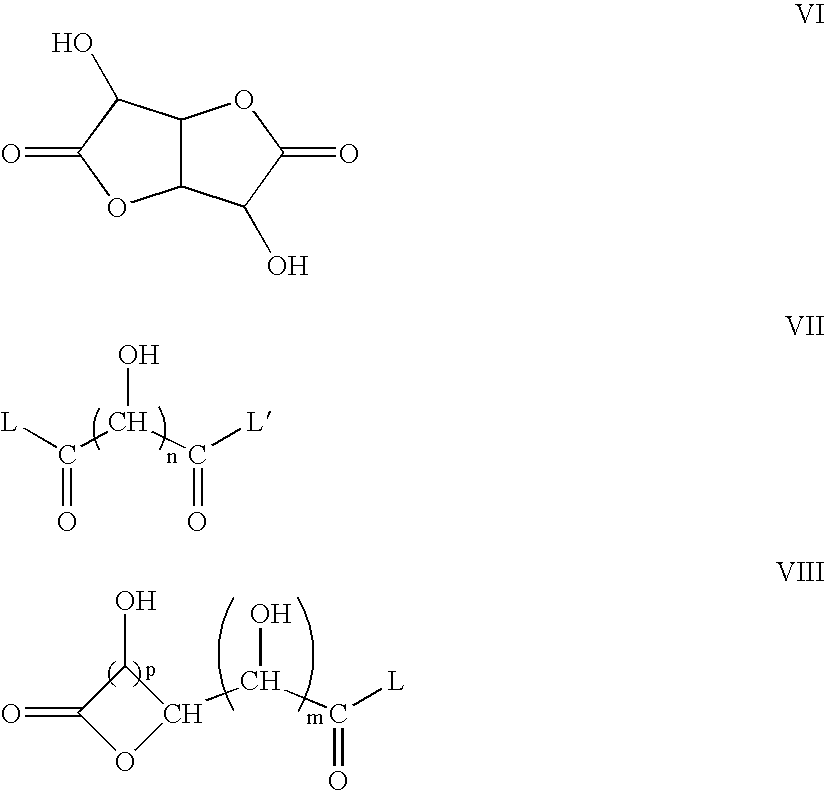Crosslinked polymers containing biomass derived materials
a technology of biomass derived materials and crosslinked polymers, which is applied in the field of novel, crosslinked polymers using biomass derived materials, can solve the problems of many materials that cannot be produced simply
- Summary
- Abstract
- Description
- Claims
- Application Information
AI Technical Summary
Benefits of technology
Problems solved by technology
Method used
Image
Examples
examples
[0092] Unless otherwise stated, in the Examples, the abbreviations used have the following meanings:
AbbreviationIngredient Name1BrC161-bromohexadecane4,9-DODDA4,9-dioxa-1,12-dodecanediamine9DA1,9-diaminononaneDMGdimethyl galactarateGAD-glucaric acidGDLD-glucaro-1,4:6,3-dilactoneHMDA1,6-hexanediamineJEFFJeffamine ®JEFF EDR-148Jeffamine ® (H2NCH2CH2OCH2CH2OCH2CH2NH2)JEFF EDR-192Jeffamine ® (H2NCH2CH2(OCH2CH2)3NH2)JEFF T5000Jeffamine ® polyethertriamineJEFF T403Jeffamine ® polypropyleneoxytriaminePAlAmHClpolyallylamine HCl (obtained from Polysciences, Inc.,Warrington, PA)
Analyses
[0093] Unless otherwise specified, the analyses were performed as follows.
Inherent Viscosity (ηinh)
[0094] Inherent viscosities were generally run as 0.5% solutions in either hexafluoroisopropanol (HFIP) or m-cresol at 30° C.
Differential Scanning Calorimetry (DSC) and Thermogravimetric Analysis (TGA)
[0095] DSC and TGA studies of all polymers were conducted on 5-10 mg samples run at 10° C. / min under nitrog...
examples 1-28
[0100] Polymers were prepared by first dissolving polyallylamine hydrochloride of ˜60,000 molecular weight in water. To that solution was added enough sodium hydroxide to just neutralize the equivalent amount of ammonium hydrochloride functions as would be used by the added GDL. To the partially neutralized polyallylamine hydrochloride was added a water solution of GDL at room temperature. The reaction was substantially over in a matter of minutes. A representative polymerization with GDL is shown below.
[0101] The crosslinking was performed using various compounds as described below in a representative reaction with GDL. When another compound was used in the in the crosslinking reaction along with the GDL, such as 9DA, they were both added simultaneously. Into a 250-mL 3-necked round bottom flask equipped with a heating mantle, reflux condenser, nitrogen inlet, and overhead stirrer was added 20 mL of water, 2.80 g (0.030 equivalent, 60,000 MW) of polyallylamine HCl, and 0.26 g (0.0...
example 29
Synthesis of Modified Polyallylamine Crosslinked with GDL
[0106] Into a 2000-mL 3-necked flask equipped with a heating mantle, reflux condenser, nitrogen inlet, and overhead stirrer was added 525 mL of water, 70 g of polyallylamine hydrochloride (0.749 mole equivalent of amine), and 2.24 g (0.056 mol) of sodium hydroxide. After these ingredients dissolved, 17.08 g (0.056 mol) of 1-bromohexadecane was added. The reaction mixture was heated at reflux for 5 hours. Afterward, the reaction mixture was cooled to room temperature and stirred overnight. An additional 5.60 g (0.140 mol) of sodium hydroxide was added to the mixture. After the sodium hydroxide dissolved, 12.18 g (0.070 mol) of GDL dissolved in 175 mL of water was added to the reaction mixture. Almost immediately a gel formed. The gelled mixture was then gently heated at 50° C. for about 7 hours. The gel was filtered, washed 3× with methanol, and then washed 3× with THF. It was then put into a vacuum oven set at 80° C. for at 2...
PUM
| Property | Measurement | Unit |
|---|---|---|
| temperature | aaaaa | aaaaa |
| temperatures | aaaaa | aaaaa |
| temperatures | aaaaa | aaaaa |
Abstract
Description
Claims
Application Information
 Login to View More
Login to View More - R&D
- Intellectual Property
- Life Sciences
- Materials
- Tech Scout
- Unparalleled Data Quality
- Higher Quality Content
- 60% Fewer Hallucinations
Browse by: Latest US Patents, China's latest patents, Technical Efficacy Thesaurus, Application Domain, Technology Topic, Popular Technical Reports.
© 2025 PatSnap. All rights reserved.Legal|Privacy policy|Modern Slavery Act Transparency Statement|Sitemap|About US| Contact US: help@patsnap.com



